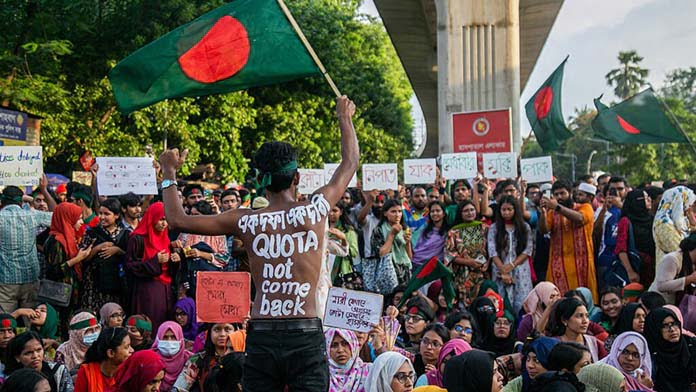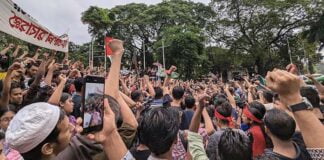In early August, a mass student uprising in Bangladesh overthrew the 15-year rule of dictator Sheikh Hasina.
The protests involved tens of thousands taking to the streets, facing down intense and violent repression until Hasina fled the country. In her place is an interim government headed by banker Muhammad Yunus.
The protests began in June when the High Court reinstated the unjust quota system which reserved 30 per cent of all public sector jobs for the families of those who fought in Bangladesh’s war of liberation in 1971.
In practice it was a way for the government to grant favours to its supporters and prop up its authoritarian rule.
The anger also ran deeper. Despite economic growth inequality has increased, with the number of individuals worth more than $5 million growing between 2010 and 2019 at the fastest rate in the world. This is the product of widespread corruption and tax evasion.
Meanwhile workers, students and the poor endure serious poverty and repression. Young people face particularly high rates of unemployment and university graduates struggle to find work.
While the overthrow of the dictatorship is cause for celebration the question of what comes next is equally important.
Bangladesh’s interim government includes politicians, lawyers, bankers and former generals—but also, significantly, leaders of the student movement that brought down Hasina. The military, which was forced to withdraw support for Hasina, has been kept out of government at the demand of the students.
Interim leader Muhammad Yunus was appointed as the choice of the student movement after a meeting which also included the opposition Bangladesh Nationalist Party (BNP) and the military. Yunus has a reputation as a “banker for the poor”, having won a Nobel Peace Prize in 2006 for his work in microfinance.
Yunus is yet to present a proposed slate of reforms, although he has promised free and fair elections soon. While he has recognised the students’ concerns, he is also eager to restore stability for the ruling class of Bangladesh.
In his first speech as leader, he saluted the student movement and called for an investigation into the killings of hundreds of student protesters. He also pledged support for the million Rohingya refugees in Bangladesh.
At the same time, he reaffirmed his commitment to business, stating that, “We won’t tolerate any attempt to disrupt the global clothing supply chain, in which we are a key player.”
The textiles industry makes up around 85 per cent of Bangladesh’s exports but is notorious for the exploitative conditions of its four million workers.
They receive poverty wages and attempts to unionise are met with severe repression.
In April 2013, more than 1100 garment workers were killed in Rana Plaza when the building housing their factories collapsed.
In the aftermath of the protests, Bangladesh faces new challenges.
The economy and the civil service have suffered. Many police officers have fled, after facing rage from the population for their years brutally enforcing the rule of the old government.
This has created a vacuum exploited by gangs and seen violence continue in the streets. Millions of Bangladeshis have also been seriously impacted by floods in the east and south-east.
Different political players will be looking to capitalise on this instability. Either of the major parties on the right, the neoliberal BNP and the Islamist Jamaat-e-Islami, could gain from the political vacuum.
The military will also be eager to regain the power that they enjoyed under Hasina.
Outside powers
India, China and the US will also be watching the situation closely. Previously Bangladesh has had a relatively neutral position and tried to balance between the three, although it has recently strengthened its relationship with China.
A closer relationship with the US would offer American imperialism a foothold close to China and a strategic position guarding China’s major trade routes in the Bay of Bengal, according to an article published by the US Naval Institute.
This has wrongly led some to suggest that the overthrow of Hasina was a “colour revolution” orchestrated by outside powers. But the uprising was a response to decades of economic and political suffering inflicted on students, workers and the poor.
This moment is crucial for the future of democracy in Bangladesh. The students and workers who brought down Hasina must keep up the fight to ensure the military or a new authoritarian regime does not take power.
Workers also need to lead a fight against inequality and for a government that delivers jobs and basic services to benefit the mass of the population. This is the only path to real change.
By Angus Dermody




